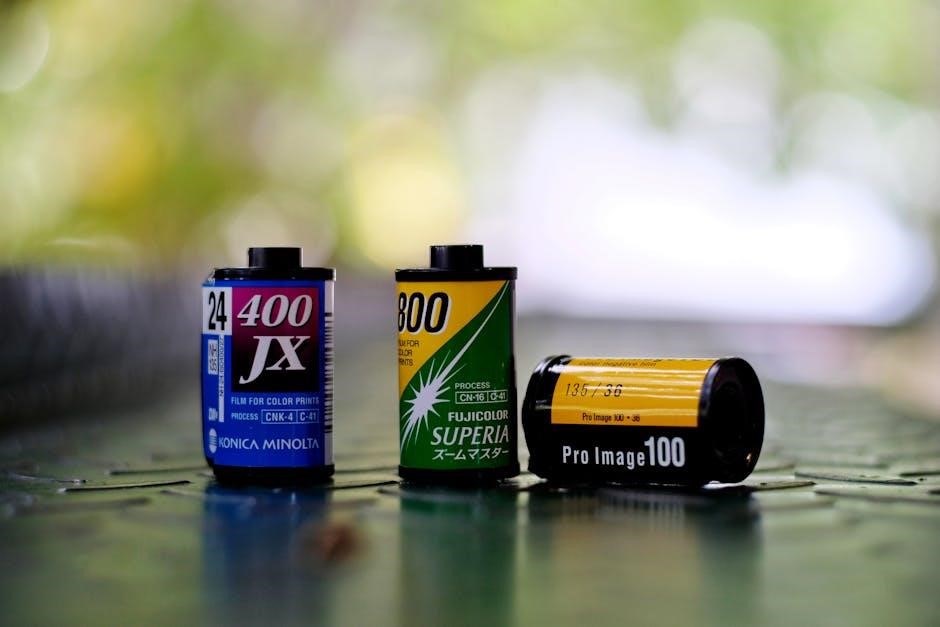
Prime 100 is a premium Australian dog food brand, offering high-quality, steam-cooked rolls as a complete and balanced diet. This guide helps determine the optimal feeding amounts for your dog’s health and well-being.
Overview of Prime 100 Dog Food
Prime 100 is a premium Australian dog food brand known for its high-quality, steam-cooked rolls. The food is designed to provide a complete and balanced diet for dogs, made with fresh, meat-based ingredients and no artificial additives. Prime 100 rolls are minimally processed to preserve nutrients and flavor, making them a popular choice for pet owners seeking a natural, healthy option. The product range includes various protein sources, such as chicken, kangaroo, and fish, catering to different dietary needs. Prime 100 rolls are suitable for all life stages, from puppies to adult dogs, and are veterinarian-recommended. With a focus on functional ingredients and a commitment to Australian quality standards, Prime 100 has become a trusted name in pet nutrition. The rolls are available in convenient sizes, including 1.5kg and 3kg, making them easy to store and serve.

Importance of Proper Feeding for Dogs

Proper feeding is crucial for maintaining your dog’s health and ensuring they thrive. A well-balanced diet supports energy levels, digestion, and overall well-being. Feeding the right amount helps prevent obesity and related health issues, while inadequate nutrition can lead to malnutrition and medical problems. Prime 100 dog food is designed to meet your dog’s nutritional needs, offering a complete and balanced diet with high-quality ingredients. By following the feeding guide, you can ensure your dog receives the optimal amount of nutrients for their age, size, and activity level. This helps maintain a healthy weight and supports long-term health, making proper feeding a cornerstone of responsible dog ownership.

Understanding Prime 100 Roll Feeding Requirements
Prime 100 roll feeding requirements are tailored to your dog’s weight, age, and activity level. The feeding guide provides recommendations to ensure optimal nutrition and health.
Feeding Guide for Adult Dogs
For adult dogs, Prime 100 recommends feeding 200g to 300g per 10kg of body weight daily. This range is designed to meet the nutritional needs of adult dogs while maintaining optimal weight and health. Adjustments may be necessary based on factors such as activity level, age, and individual metabolism. For example, more active dogs may require the higher end of the range, while less active dogs may need less. It’s important to monitor your dog’s body condition score and adjust feeding amounts accordingly. Additionally, Prime 100 offers an interactive feeding calculator on their website, which provides personalized recommendations based on your dog’s specific needs. Always consult your veterinarian for tailored advice, especially for dogs with specific dietary requirements or health conditions.
Feeding Guide for Puppies
Prime 100 recommends a tailored feeding approach for puppies, as their nutritional needs are higher due to rapid growth and development. Puppies require 25-35 grams per kilogram of body weight per day when using Prime 100 rolls as a complete diet. This ensures they receive adequate nutrients for healthy growth; For example, a 5kg puppy would need approximately 125-175 grams daily. It’s essential to divide the daily ration into 3-4 smaller meals for puppies under 6 months and gradually reduce to 2 meals a day as they mature. Always monitor your puppy’s growth and adjust portions to prevent overfeeding. Consulting your veterinarian is recommended to ensure the feeding plan aligns with your puppy’s specific needs and developmental stage.
Feeding Guide for Specific Breeds
Feeding amounts for specific breeds may vary based on size, activity level, and breed-specific health conditions. For smaller breeds, such as Poodles or Chihuahuas, feeding amounts are generally lower due to their smaller stature and lower energy needs. Larger breeds, like Labradors or German Shepherds, require higher quantities to support their growth and energy expenditure. For example, a 20kg Labrador might need 400-600 grams per day, while a 5kg Poodle may require 100-150 grams. Breeds prone to specific health issues, such as hip dysplasia in larger breeds, may benefit from tailored feeding plans. Always consult your veterinarian to ensure the feeding guide aligns with your dog’s breed-specific needs and health status.

Factors Influencing Feeding Amounts
Feeding amounts are influenced by a dog’s weight, activity level, and growth stage. Higher activity or growth phases may require more food, while less active dogs need less. Individual metabolic rates also play a role. Always consult a veterinarian to ensure feeding aligns with your dog’s specific needs for optimal health and nutrition.
Dog’s Weight and Activity Level
A dog’s weight and activity level significantly influence feeding amounts. Prime 100 recommends 200-300g per 10kg of body weight for adult dogs, adjusting for energy expenditure. Active or working dogs may require up to 20-30% more food, while less active or overweight dogs need less. Monitoring your dog’s weight and adjusting portions ensures optimal health. For example, a highly active 20kg dog might need 400-600g daily, while a sedentary dog of the same weight may require 300-400g. Using the Prime 100 feeding calculator or consulting a vet can help tailor portions precisely. Regularly assessing your dog’s condition and adjusting feeding amounts ensures they remain healthy and thrive.
Adjustments for Growing Dogs

Adjusting feeding amounts for growing dogs is crucial to ensure proper development. Puppies and young dogs require more calories to support growth, with feeding amounts increasing as they mature. For example, puppies may need 10-20% more food than adult dogs of the same weight. Large-breed puppies often require slower adjustments to prevent joint issues, while smaller breeds may need more frequent increases. Monitoring weight and body condition is essential to avoid overfeeding. Use the Prime 100 feeding calculator or consult a vet to tailor portions for your dog’s growth stage. Regular check-ups ensure optimal nutrition during this critical period, helping your dog thrive and maintain a healthy weight as they grow.
Consulting Your Veterinarian
Consulting your veterinarian is essential for tailoring your dog’s diet to their specific needs. They can provide personalized advice based on your dog’s health, age, and lifestyle. Vets can help adjust feeding amounts to prevent overfeeding or underfeeding, ensuring your dog maintains an optimal weight. Regular check-ups allow your vet to monitor your dog’s health and make necessary dietary changes. Prime 100’s feeding guide is a great starting point, but your vet can offer customized recommendations for special conditions or allergies. Always seek professional advice before making significant changes to your dog’s diet. This ensures your dog receives the best possible nutrition for their unique needs, promoting long-term health and well-being.
Storage and Handling of Prime 100 Rolls
Store Prime 100 rolls in a cool, dry place. Once opened, refrigerate below 4°C and use within 5-7 days. Keep sealed to maintain freshness.
Refrigeration and Shelf Life
Prime 100 rolls must be refrigerated below 4°C once opened to maintain freshness. Use within 5-7 days of opening. Unopened rolls have a longer shelf life when stored in a cool, dry place. Ensure the product is sealed tightly after opening to prevent contamination and spoilage. For optimal freshness, always check the expiration date before purchase. If freezing, ensure the roll is properly wrapped to avoid freezer burn. Proper storage and handling ensure the nutrients remain intact, providing your dog with a healthy, balanced diet. Always follow the manufacturer’s guidelines for storage to maximize shelf life and maintain the product’s quality.
Hygiene Practices
Maintaining proper hygiene when handling Prime 100 rolls is essential to ensure your dog’s health and safety. Always wash your hands thoroughly before and after handling the food; Use clean utensils and bowls to serve the rolls, and avoid cross-contamination with other foods or surfaces. After opening, store the roll in a sealed container or wrap it tightly to prevent exposure to air and bacteria. Keep the feeding area clean and tidy to reduce the risk of attracting pests. Uneaten portions should be removed promptly to maintain freshness and hygiene. Regularly clean and disinfect feeding bowls and utensils to prevent bacterial growth. By following these practices, you can help safeguard your dog’s well-being and ensure a clean feeding experience. Proper hygiene practices are crucial for maintaining the quality and safety of the food.
Additional Tips for Optimal Feeding
For optimal feeding, use the interactive calculator on Prime100’s website to customize portions for your dog. Ensure fresh water is always available and monitor your dog’s health regularly to adjust feeding amounts as needed.
Using the Interactive Feeding Calculator
The interactive feeding calculator on Prime100’s website is a valuable tool for determining the exact amount of food your dog needs. Simply input your dog’s weight, activity level, and breed, and the calculator will provide a tailored recommendation. This ensures your dog receives the right portion size for optimal health. The calculator is user-friendly and saves time, eliminating guesswork. It’s particularly useful for adjusting feeding amounts as your dog grows or their activity level changes. By using the calculator, you can prevent underfeeding or overfeeding, promoting a balanced diet. Visit the Prime100 website to access this resource and ensure your dog is getting the nutrition they deserve. It’s a convenient way to make feeding decisions with confidence and precision.

Maintaining Fresh Water Availability
Fresh water is essential for your dog’s health and digestion, especially when feeding Prime 100 rolls. Ensure your dog always has access to clean, fresh water to prevent dehydration and support overall well-being. Change the water daily and clean the bowl regularly to avoid bacterial growth. Place water bowls in easy-to-access locations to encourage consistent hydration. Monitor your dog’s water intake, especially in hot weather or during periods of high activity. A well-hydrated dog is more likely to digest food properly and maintain optimal health. Remember, fresh water is as important as the food itself for your dog’s nutritional balance and energy levels.
Monitoring Your Dog’s Health
Regularly monitoring your dog’s health is crucial to ensure they thrive on the Prime 100 roll diet. Check their weight, body condition, and overall appearance to confirm they are maintaining a healthy balance. Look for signs of vitality, such as a shiny coat, energetic behavior, and bright eyes. Monitor digestion by observing stool quality and consistency. If you notice any changes, such as lethargy, weight loss, or digestive issues, consult your veterinarian promptly. Adjust feeding amounts or seek professional advice if needed. Regular health checks and observations help ensure your dog is receiving the right nutrition for optimal well-being. By staying attentive, you can address any potential issues early, supporting your dog’s long-term health and happiness.